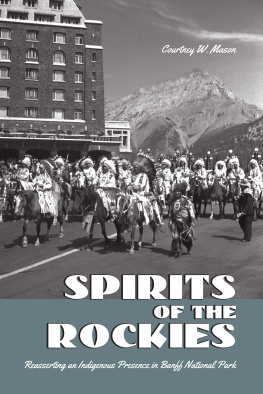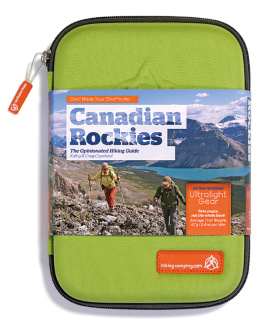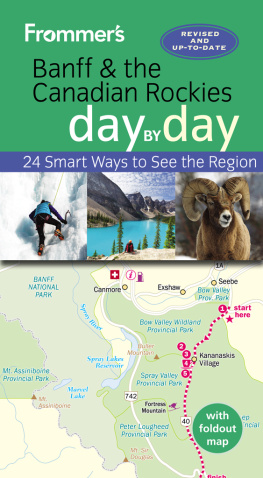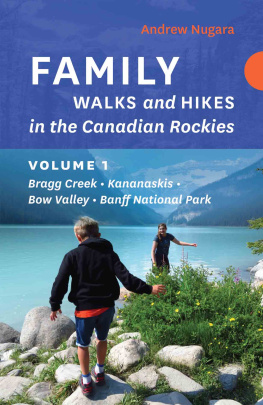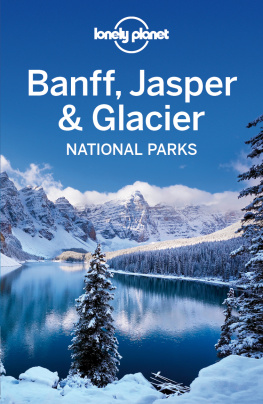The BanffBow Valley in western Alberta is the heart of spiritual and economic life for the Nakoda peoples. Beginning with the Treaty 7 agreement (1877), the Nakoda were displaced from the region by the reserve system and the creation of Canadas first national park. In the twentieth century, the Nakoda reasserted their presence in the valley through their involvement in local tourism economies and the Banff Indian Days sporting festivals.
Drawing on six years of ethnographic research, extensive oral testimonies from Nakoda elders, and detailed analysis of archival records, Spirits of the Rockies is a sophisticated account of the the Nakoda peoples colonial encounters with missionaries, government agents, tourism entrepreneurs, and park officials. The Nakoda strategically built relationships in order to gain access to their sacred sites that were redefined as protected areas. These Indigenous communities creatively responded to colonial policies that were designed to repress their subsistence practices and assimilate their cultures. Using an innovative Foucauldian approach, Mason examines the power relations that shaped racial discourse within the Rocky Mountains during this dynamic period of Western Canadian history.
COURTNEY W. MASON is a postdoctoral research fellow with the Indigenous Health Research Group at the University of Ottawa.
Acknowledgments
There are many individuals who have supported me over the years. Quite simply, without their encouragement, knowledge, and generosity, this book would not have been possible. I thank all of them for their individual contributions.
Elders and residents of Nakoda communities at Morley and Banff collaborated with me on this project. I would like especially to acknowledge Roland Rollinmud, Lenny Poucette, Margaret Snow, Jackson Wesley, Ralphine Locke, and Ian A.L. Getty for facilitating aspects of this research, building connections between cultures, and teaching me how to listen.
A number of colleagues have contributed to this work. Debra Shogan, Andie Palmer, Pirkko Markula, Tom Hinch, Ian MacLaren, Vicky Paraschak, Michael Robidoux, and the late Rod Murray deserve special mention due to their reviews of content and shaping of ideas. As undergraduate students, Erin Flaherty, Leslie LeMoal, and Jayn Villetard helped with early archival data collection.
Valuable support was provided by the following institutions: the University of Alberta, the Social Sciences and Humanities Research Council of Canada, the Eleanor Luxton Historical Foundation, Parks Canada, the Glenbow Museum, the Whyte Museum of the Canadian Rockies, the Canadian Pacific Archives, and the Banff Public Library. I would like to recognize the three anonymous reviewers, as well as the staff at the University of Toronto Press, for their commitment to this project.
Numerous friends have shaped aspects of this book. To childhood friends, the Laurier crew, and fellow grad students over the years, thank you for being there along the way. Thanks to my friend Sabrina Russo for her photographic expertise.
I am fortunate enough to come from a large and caring family. My Mason/Bilmer cousins, aunts, uncles, and grandparents have taught me much about the social world. Support from the Howitt/Bruce families is also appreciated. The unconditional love and encouragement of my family (Mom and Dad, Emily, Todd, Kaley, Laure, Andie, Tia, and Alienor) constantly gives me meaning and direction in life.
My partner Josephine has shared much of this journey and subsequently there is a part of her in everything I do. This book has also benefited from her fine editing skills and comments.
A portion of the royalties for this book will be donated to the Stoney Health Centre in Morley, Alberta, which provides critical health services to local youth and families.
Foreword
ROLAND ROLLINMUD AND IAN A.L. GETTY
The Bow Valley and Bow River, called Mn Thn Wapta or Cold Water River, has been the traditional spiritual centre of the Nakoda People since time immemorial. As the giver of life, the river provides us with traditional foods, medicinal plants, shelter, animals to hunt, as well as sacred areas and vision quest sites. Indeed, the river forms the centre of our culture, our economy, our families, and our way of living off the land. According to Nakoda elders, the location of the Banff Indian Days is called Mn hrpa (waterfalls). The Nakoda camped at the foot of Cascade Mountain, which served as a gathering place for meetings, for healing, as a place of worship, for sweat lodges, and for access to the sacred waters of the hot springs for spiritual cleansing. After the Banff Hot Springs Reserve was established, each summer our people would visit the area as a special retreat. This is where we would celebrate our culture and renew our special relationship with Mother Earth.
This book by Dr Courtney Mason is an evocative analysis by the scholar into the history and the cultural heritage of the Stoney Nakoda people who have made the Bow Valley corridor and Rocky Mountain headwaters their homeland for centuries. He takes us on a personal and historical journey that is often ignored, or unwittingly passed, by travellers going through the Stoney Nakoda Indian Reserve on the Trans-Canada Highway, situated midway between Calgary and Banff National Park. This is partly a journey of personal awareness and contact with the Nakoda; the story of the early history of the Nakoda in Banff National Park and the importance and celebration of their culture as reflected through the Banff Indian Days festivals; and a narrative of Nakoda historic and contemporary way of life in the Bow Valley and foothills of Alberta.
Mason neatly ties together his personal experiences in meeting and gaining the trust of Nakoda community members as he sought out their perspectives on their historic roots in Banff National Park. The park was created in 1885 to protect and to exploit the hot springs that were (and are) the spiritual essence of the Nakodas relationship with the land. This is meticulously demonstrated in the book using the oral-history testimony of elders. His decision to collaborate with the Nakoda community and individuals with whom he worked while volunteering in the community gave him rare access to the oral history of Banff National Park and its central role in Nakoda spirituality and cultural activities. Perhaps by serendipitous convergence, we met Courtney through our involvement in cultural events such as the Banff Indian Days, which are held annually near the Banff townsite.
Mason has skilfully combined this personal authenticity with the extensive archival research he conducted in local archives and data gleaned from newspapers. Based on the special request from elders, he has already deposited with the Stoney Nakoda Nation archives a condensed history of Nakoda communities and the Banff Indian Days festivals. Based on his primary evidence, this history will enable other researchers to instantly undertake additional analysis on Indigenous participation in this century-old event that predates even the Calgary Stampede. Masons work is in direct contrast to that of many previous researchers, who have conducted fieldwork with community members and not shared their original notes, and sometimes even their results, with the community. Masons research into the history of the BanffBow Valley region, the traditional homelands of the Nakoda people, incorporates their oral histories at the heart of his narrative. His approach challenges the many authors who ignore or in only a token fashion acknowledge local Indigenous peoples. By centring the Nakoda experience in his narrative, he offers fresh insight into the impact of government officials and policies, missionaries, the tourism industry, and the surrounding communities that now encircle the Stoney Indian Reserve at Morley.

